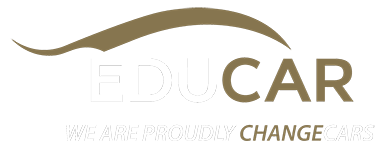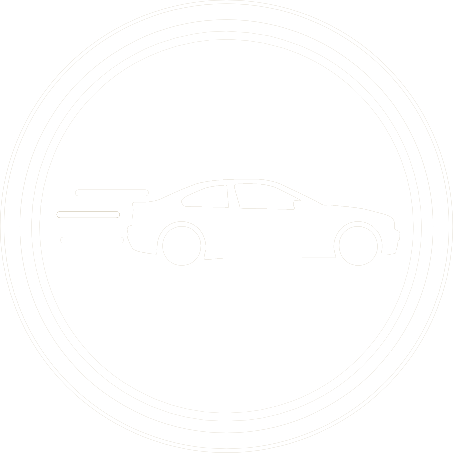Continued investment and development aims to establish Volkswagen as a leader in the growing African market.
The inaugural Volkswagen Indaba, which was recently hosted at this manufacturer’s Kariega facility in the Eastern Cape, served multiple purposes. One of those was the announcement of a brace of new and revised models soon to arrive in South Africa, and another was to issue reassurance that the company remains committed to its South African operations.
Related: Get all the details about VW’s newcomers scheduled for release in 2024!

An additional as-yet-unannounced entry-level crossover and a mooted related bakkie will join the Polo and Vivo on the production line in 2025, and these models will continue for at least another 5 years to maintain the Kariega plant’s immediate relevance. The parent company’s plans don’t pertain only to our market, however, as it intends to use its South African base as a springboard for further, longer-term expansion into the rest of the continent.
Renamed company with a broadened vision
Reflecting this expansionary vision, the local company was recently renamed from Volkswagen Group South Africa to Volkswagen Group Africa. It aims to build cars in South Africa, of course, but it will also be instrumental in the establishment and expansion of assembly plants in other regions of our continent.
 Various Volkswagen facilities are already in operation in Africa, with factories in Ghana, Rwanda, Kenya and Nigeria churning out VWs for their local markets, and the SKD (semi-knocked-down) and CKD (completely knocked-down) kits for these and other future assembly plants will increasingly be sourced from the South African operation.
Various Volkswagen facilities are already in operation in Africa, with factories in Ghana, Rwanda, Kenya and Nigeria churning out VWs for their local markets, and the SKD (semi-knocked-down) and CKD (completely knocked-down) kits for these and other future assembly plants will increasingly be sourced from the South African operation.
Remember that VW assembly in South Africa started this way back in 1951, with Beetle kits sourced from Wolfsburg. South Africa was only the second location where Beetles were assembled from CKD kits, but then grew up to evolve alongside the company's products. (Ireland was the first, but the Dublin factory only lasted until the mid-1980s, when production of the Beetle ceased).

From this modest start, a localised component supply chain was created as the industry matured, in turn creating the successful template for a multitude of worldwide facilities established by Volkswagen since then.
This approach already helped Volkswagen gain secure footholds in China, Latin America, and India. But, with these markets approaching saturation within the next few decades, Volkswagen is looking beyond these current operations in its long-term planning, and Africa looks very promising indeed.
Related: You will find your ideal new or used Volkswagen Polo in this great selection on CHANGECARS.

Exporting from South Africa
We already know that the Polo is South Africa’s leading vehicle export, with more than 70% of production heading for overseas markets, and that this number is set to increase even further thanks to the local plant becoming the sole supplier of Polos in the near future. This is because European Polos will no longer be sourced from Pamplona in Spain, as that facility is now focusing on Taigo and T-Cross production for Europe.
 However, little public attention is given to the workings behind this export drive, which entails a lot of local development and component sourcing. To this end, we were granted access to some research- and development areas inside the Kariega factory, and shown just how much influence the South African division has in the production of new and future Volkswagens.
However, little public attention is given to the workings behind this export drive, which entails a lot of local development and component sourcing. To this end, we were granted access to some research- and development areas inside the Kariega factory, and shown just how much influence the South African division has in the production of new and future Volkswagens.
VW has invested heavily in developing their South African supply network, and succeeded to the extent where a number of international Volkswagen Group products already use locally-made components. One example is seat frames, which are sourced from a local supplier but exported to South America, where they are installed in the first-generation Amarok (which is still in production in Argentina).

Another example is the dashboard and centre console in Spanish-built RHD Taigo and T-Cross models, where the Uitenhage factory and various local subcontractors manufacture these components with Germanic precision to the tune of 20 000 units per year. In the process, 10 local suppliers were helped to grow into accommodating this demand, creating hundreds of jobs in the process.
Related: Get a new or used VW T-Cross to suit your needs on CHANGECARS.
Catalysing growth and stimulating the local economy
Catalytic converters are extremely lucrative for Volkswagen as well. Seeing as South Africa sits on around 65% of the raw material reserves used in the production of these emission control systems, it only makes sense to have the platinum, rhodium and palladium extracted and processed, and then turned into functioning catalytic converters where most of the raw materials come from. Doing so not only boosts local enterprise, but reduces our foreign trade deficit to shore up the country’s economy as a whole.

Consequently, SA-made catalysts are used in various international Audi, VW, Skoda, Seat and Porsche models already. Thanks to their support of local suppliers in this production chain, Volkswagen has grown an initial investment of R220-million into a business with an export turnover in excess of R43-billion, from where over 6 million catalysts have been exported to date.
Moving towards carbon neutrality
The local Volkswagen operation is also well advanced with their environmental goals, thanks to large-scale investment in waste management and optimisation of water- and electricity usage. In line with their goals, the electricity needed to produce one vehicle has decreased by 57% since 2010, while water use has dropped by 73% and overall waste has been slashed by 76%. This all contributes to an overall CO2 reduction of 53% per unit produced.

Seeing as the Volkswagen Kariega plant is largely dependent on our tempestuous national electricity provider, the company has also invested heavily in a diesel-powered generation plant with a capacity of 16 MW to overcome the production challenges posed by loadshedding. From mid-March 2024, these generators will keep production running regardless of any Eskom fumbling, even if it can cost up to R 1.6-million per day to operate.

And, if your mind instinctively makes a negative connection between “Volkswagen” and “diesel”, you should also note that the company has thus far invested R34-million in solar arrays with a capacity of 4 488 MWh across its local departments, with a further R55-million currently being spent on installing solar panels in their employee car park to generate an additional 4 500 MWh of electricity. Once all this spending is complete and all other systems are fully-optimised, the Kariega plant will achieve carbon neutrality by 2030.
Related: The much-loved Volkswagen Golf recently celebrated its 50th birthday. We bring you the story.
More than merely building cars
Volkswagen Group Africa’s vehicle export program is earning good money and their products are a perennial fixture in our top-seller lists, but it also plans much further ahead than just the next model cycle. By cultivating business practices which balances sustainability, ecological awareness, community service and growth, this company is doing much more than just building cars.

Add the development of local enterprise and an total employment chain measuring more than 50 000 people to its well-documented corporate social responsibility program, which includes youth development programs and “cradle-to-career” education initiatives, and it becomes clear that Volkswagen is here to stay. In today’s tumultuous economy and given our challenging marketplace, that is very good news indeed.
Martin Pretorius
- Proudly CHANGECARS
Get the Volkswagen of your dreams in this awesome selection on CHANGECARS!












